Review of Volume I, 1923-1959 by Pete Vack
Click on photos to enlarge
Extraordinary, impressive, memorable, unique; Twice Around the Clock is a formidable tour de force by a master historian.
A while back, Tim Considine emailed telling me he was honored with the Motoring Guild’s Best Book of the Year award for his new book, Twice Around The Clock – The Yanks At Le Mans Vol. I-III and furthermore, that the book had also earned the Dean Batchelor Award for Excellence in Automotive Journalism. On April 5 it was noted that “Yanks at Le Mans” got another nice review as “Book of the Month” in the new Classic & Sports Cars magazine. In the motor book trade, that’s the equivalent of two or three Academy Awards. Tim, I figured, must have really knocked ‘em dead out there.
Being remembered
Considine, for those who may not know, is an actor who is mainly remembered as ‘Mike’, on the My Three Sons TV show. He has also produced, directed, and photographed documentary films for public television. (Read bio) However, he was and is a car enthusiast, historian and writer with three books to his credit, including the award-winning American Grand Prix Racing. But despite his many accomplishments, Tim Considine will now be remembered, and perhaps revered, for Twice Around the Clock, a comprehensive look at American efforts at Le Mans from 1923 to 1979. In writing this history, Considine has elevated the accomplishments of the American cars, drivers, entrants, owners, engineers and mechanics who made an attempt to win at Le Mans. Most of us think of only Ford and Cunningham at Le Mans, but Considine shows us there is so much more. If you think you are already aware of American efforts at Le Mans, Considine will amaze you. He has done America proud.
Defining the scope
Above, Chinetti wins at Le Mans with a Ferrari. Americans at Le Mans? How did Considine define the scope of the book? Fortunately, he took a broad view of what constitutes Americans at Le Mans. Chinetti, for example, became a naturalized American citizen after he moved to the U.S., and so becomes fair game as is his North American Racing Team (this is noted with an asterik in the book). The Ford Montier was a modified French Model T and joins the gang. The neat little English Ford C Ten that placed 14th overall and second in class in 1937 qualifies as does the Nash Healey, whose record at Le Mans out-placed the monied Cunningham team. Likewise, Lucy Schell and her Ecurie Bleue team of Delahayes are part of the story, thus providing plenty of content for the book. The three volumes are split by years, Volume I from 1923 to 1959, Volume II from 1960 to 1969, and Volume III from 1970 to 1979.
The Interviews
The three volumes are based in large part on interviews with the participants obtained over a 28-year period. Wisely, fortuitously, with great patience and foresight, Tim talked to as many drivers and team members as he could before it was too late. His first interview was with Briggs Cunningham in 1992 in reference to the 1950 event. And from there on, Considine fills the years with interesting quotes and anecdotes from everyone including John Fitch, Phil Hill, Carroll Shelby, Sherwood Johnston and Dan Gurney; the list goes on. Of course when writing of the prewar years, the participants have long passed but Considine uses personal letters, books, and magazines to find informative and interesting quotes from the drivers and entrants. (Considine is not afraid to use outside sources for the postwar races as well.) The result: Here, for once, is the inside story told by those who were there. This reviewer has never read anything like it and there are gems on almost every page. As layout specialist Jodi Ellis (she was wisely borrowed from Dalton Watson for this effort) said, “I laughed, I cried, I learned. Never has an automotive book been so compelling!”
Six takeways from Volume I
1923: Even though VeloceToday published the only English work on the Montier Fords, Tim informs us that the emblem on the radiator says ‘Ford Montier’, and aptly puts Ford before Montier. A full account of the Montier adventure is recounted.
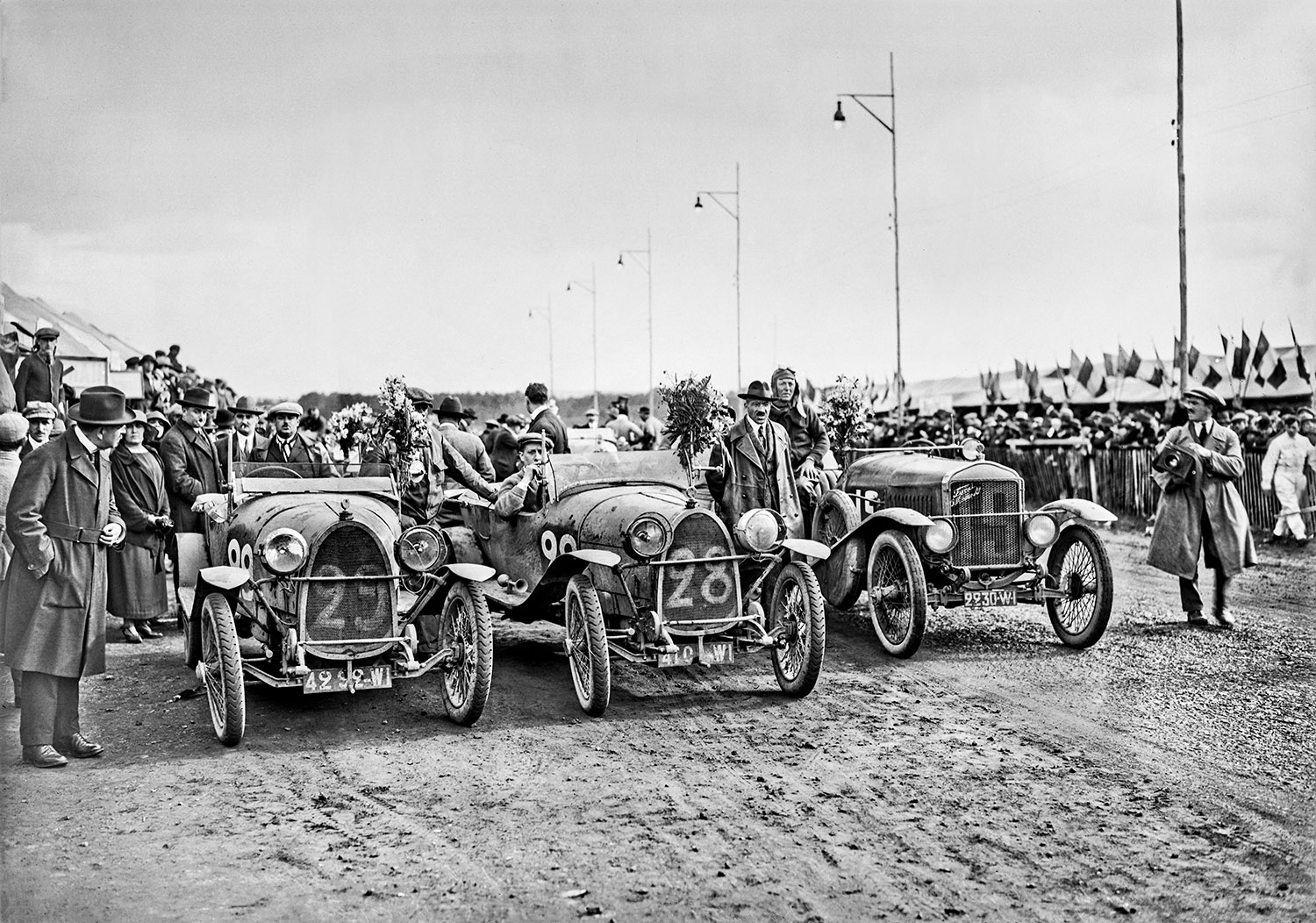
Two Bugatti Brescias and the Ford Montier which finished 14th in the first Le Mans 24 hour race in 1923. (Gallica photo)
1928: Charles Weymann of the famous Weymann American Body Company entered a Stutz for the team of Brisson and Bloch who came in second, a Chrysler third. Only the concentrated effort by the Bentley boys stopped the charge of the Stutz and Chryslers. Podium finishes for American cars in 1928!
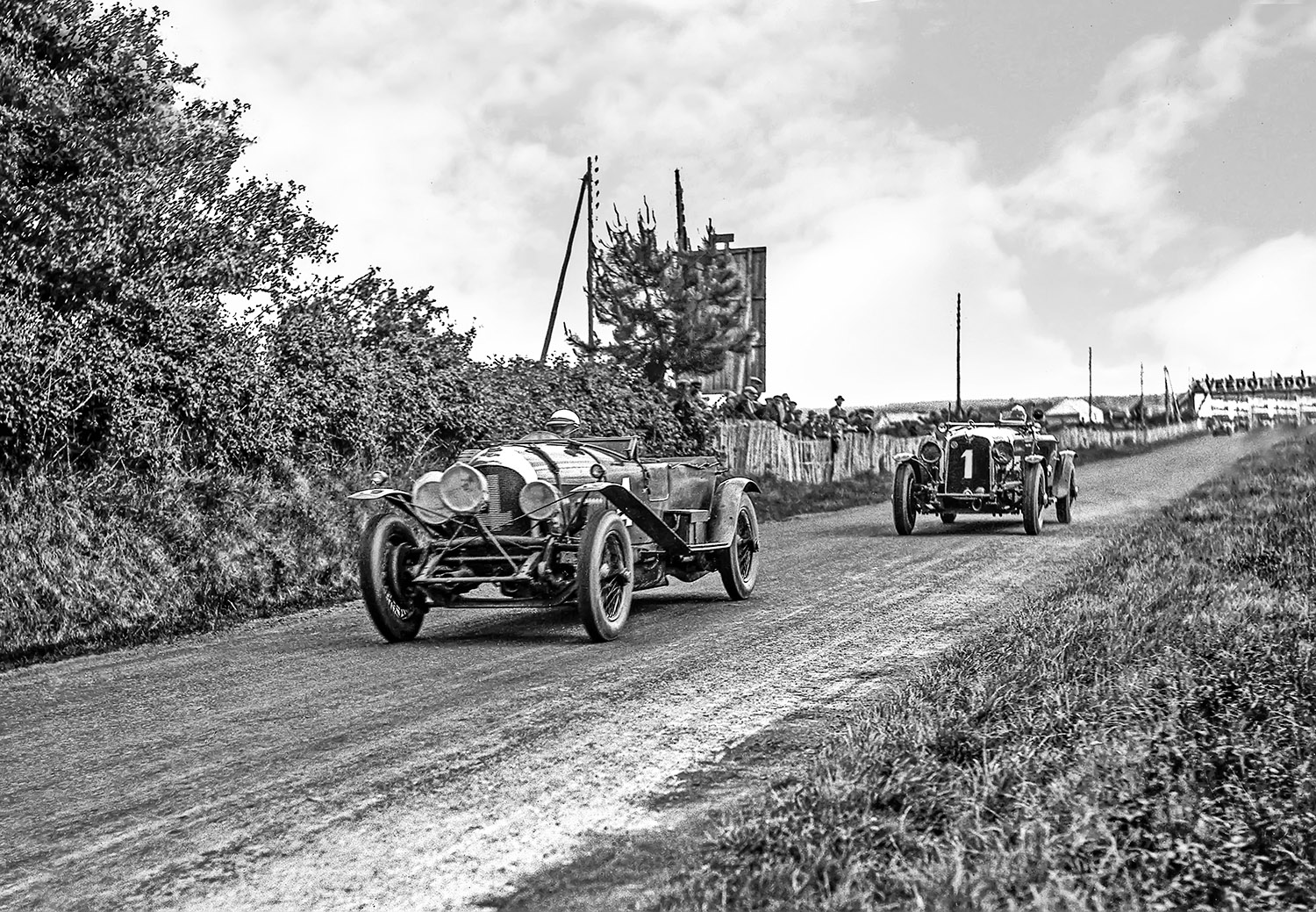
Brisson’s Stutz is about to overtake Barnato’s Bentley, becoming the first American car to lead at Le Mans, 1928. (LAT photo)
1929: Charles Moran Jr, later a founding member of the SCCA, entered with a Dupont but retired after three hours. Moran and co-driver Miranda were the first Americans to compete at Le Mans. Previously, these impressive results by Chrysler, Stutz, Willys Overland and Duesenberg were nothing but small statistics and footnotes. Considine researches each entry with a passion and brings them to the forefront.
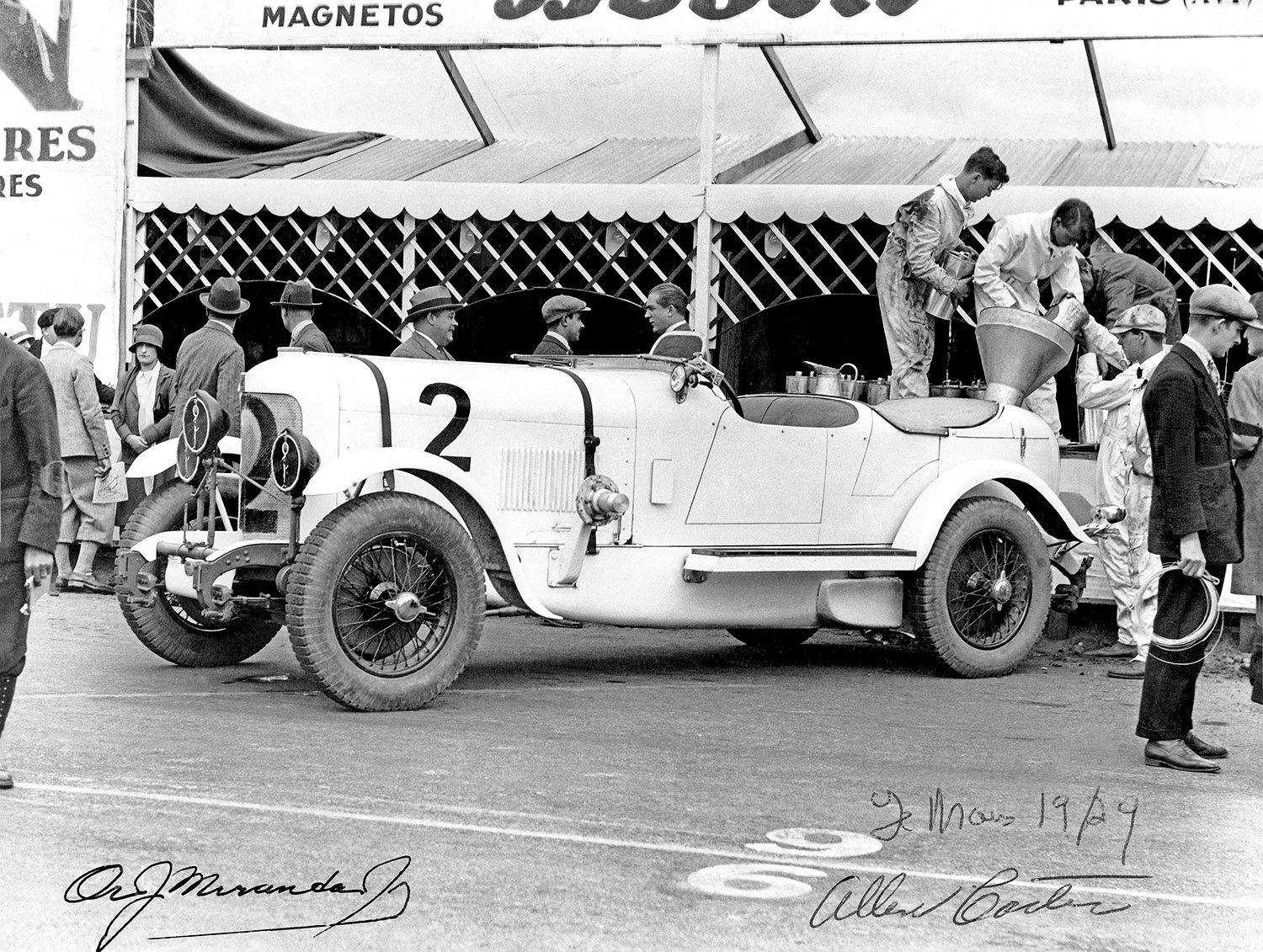
1929. Charles Moran Jr., later a founder of the SCCA drove this special Dupont with Alfredo Luis Miranda, Jr. (Stan Smith Collection)
1939: Miles Collier arrives with his special MG and, as a joke, cuts across the infield to astound the timekeepers with a very fast lap time. The prank reminds us of Harry Schell, who may have been at Le Mans that year with his parents. Schell pulled the same trick at Sebring in 1959. (see American Grand Prix Racing, page 76).
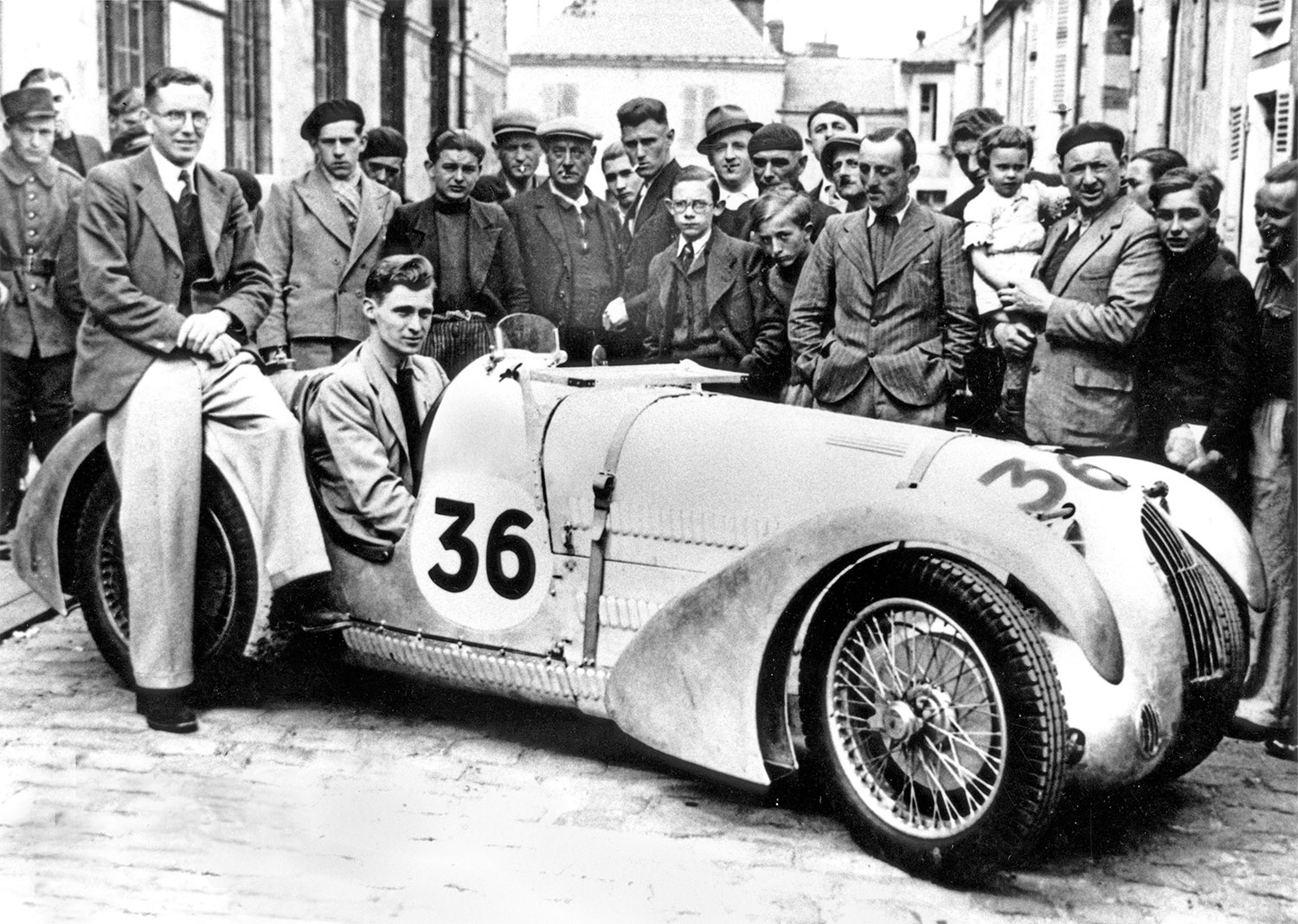
Miles Collier behind the wheel of “Leonidis”, a very special MG PA built for Le Mans in 1939. It would retire with a split fuel tank on lap 63. (REVS Institute photo)
1953: Many different views of the Cunningham effort, and great photos. But it was tough, as the cars failed to achieve their goal of winning. And there was tragedy as well. Phil Walters thought he had hit Cole’s body and immediately went into the pits.

Even though born in Wales, Tom Cole was, as far as Phil Hill knew, “…definitely an American.” But Cole would be the first American to lose his life at Le Mans. John Fitch goes by in the Cunningham C5-R. (Automuseum Prototyp, Hamburg)
1958: In a 2004 interview with Considine, Bruce Kessler describes his accident with the NART Ferrari and the immediate aftermath. It is at once tragic (Jag driver Jean-Marie Brussin died), unbelievable (Kessler sits on the headrest as the Ferrari crashes into the wall) and hilarious (taken to the hospital in a pickup truck, to their horror the nurses find Kessler’s chicken snack hidden under his sweater); in one brief first-person story is everything that was Le Mans in the 1950s.
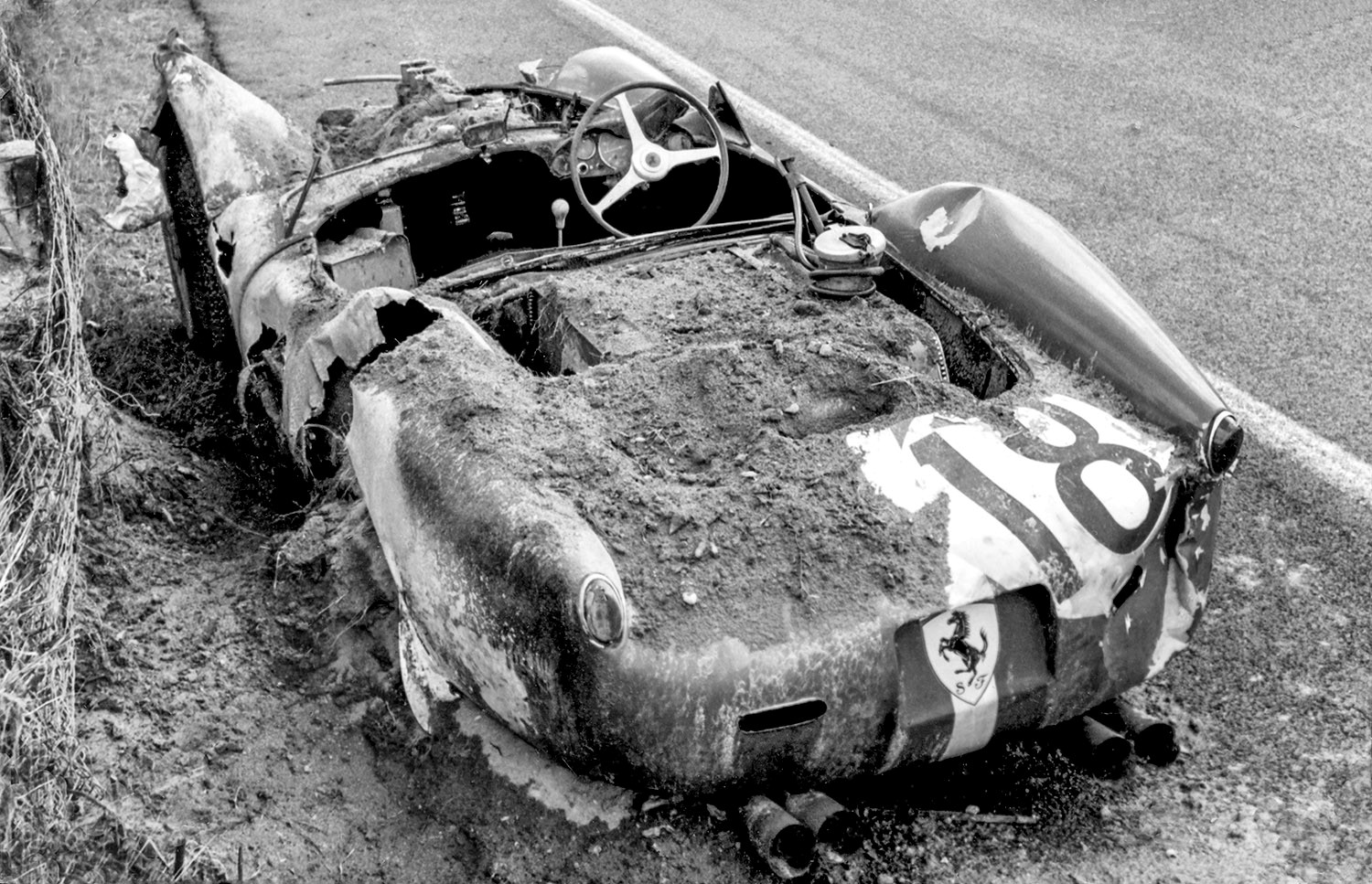
The burned out Ferrari of Bruce Kessler, who sat on the headrest seconds before the car hit the barrier, catapulting Kessler but saving his life. (REVS Institute photo)
Photography, Volume I
Each chapter constitutes a different year and each has an opening or lead image. These were chosen by the author and are full page spreads. The selection is striking, bold and sets off each year in a dramatic fashion. This is followed by 10 to 25 pages of text and smaller images that describe the event. The first color images appear in the 1957 chapter, but the black and white photos are often superior. While many are familiar, the majority are not, and may not have been published elsewhere. At great cost, Considine has found photos from private collections as well as sources such as REVS. Credits are given in all cases in the captions. We give Volume I photography an A+.
And, most importantly
Considine and Ellis have provided the reader and historians with a superb Index. But the appendices are even more useful:
Appendix I Citations
The source of every quote in each chapter, listed by chapter, person quoted, a few words from the quote and the source. Absolutely essential and makes this work not only art but a credible resource for all historians now and in the future.
Appendix II Participants, 1923-1959
Cars, drivers, engines, teams of every American or American related participant
Appendix III Driver History
Drivers are listed with the car driven and position
Appendix IV Car (Engine) Record
Every American car or car with an American engine listed
We’ll review Volume 2, 1960 to 1969 next week.
Author: Tim Considine
Publication Date: October, 2018
ISBN: 978-0-9993953-0-1
Page Size: 9 x 11 inches
Three volumes, hard cover in slipcase
Vol. I (1923 – 1959): 408 pages / 371 photographs
Vol. II (1960 – 1969): 360 pages / 327 photographs
Vol. III (1970 – 1979): 328 pages / 227 photographs
Note! If you want an autographed copy, request one from the CONTACT button, which goes straight to Considine.

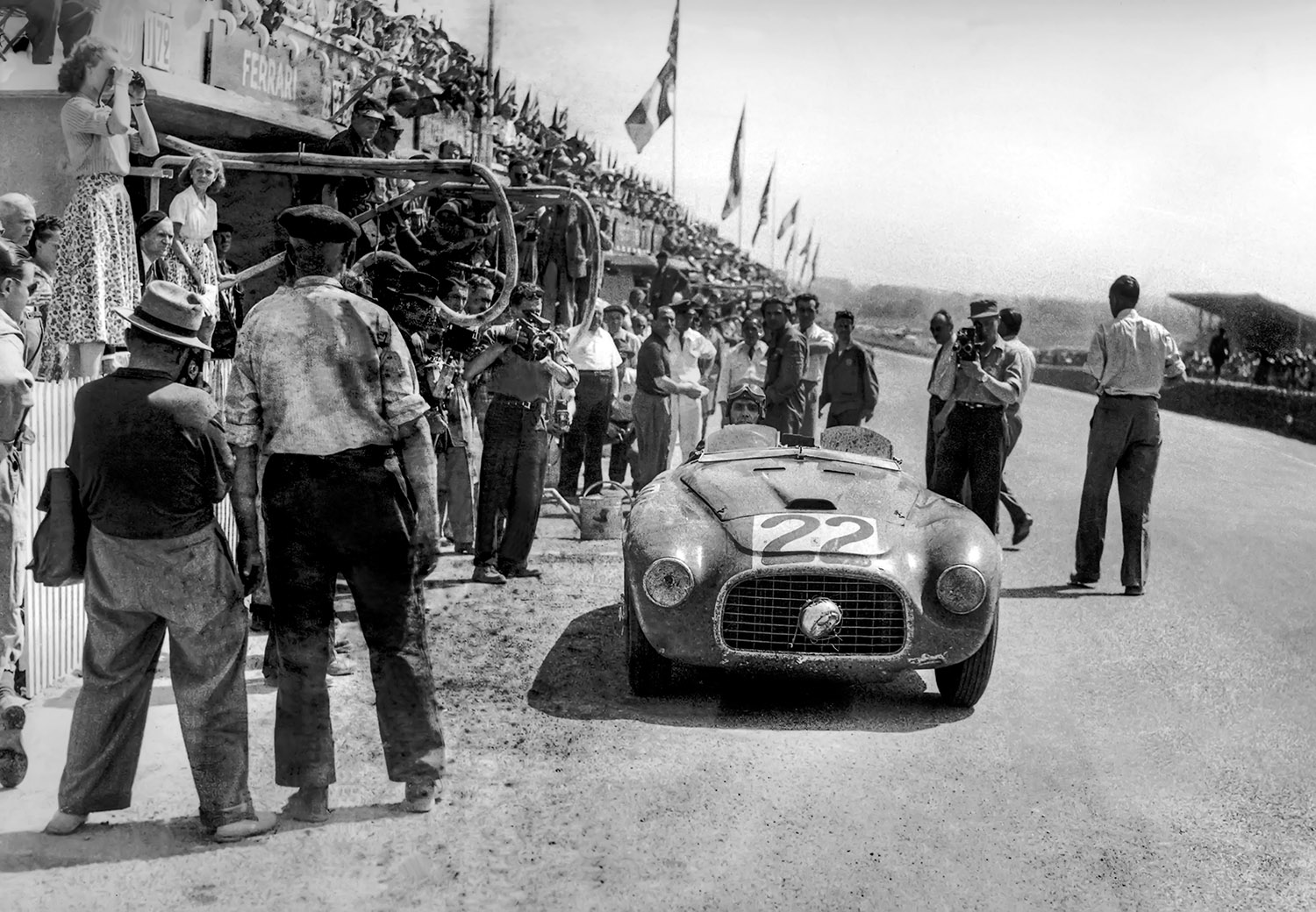
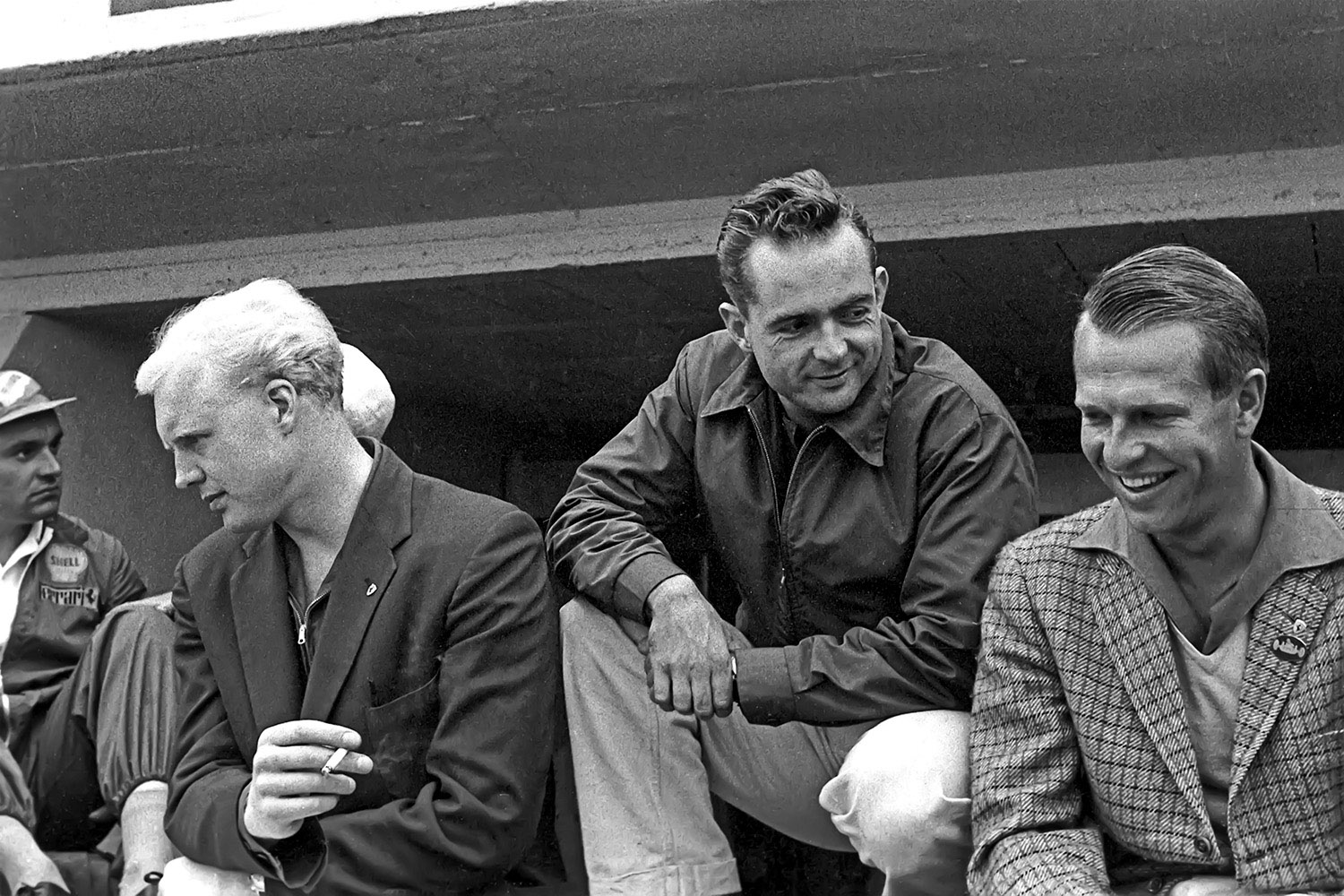
… I agree with everything that PV says about this important work of motor history that reads more like (because it actually is!) a true life adventure book. The stories are first-hand/personal and the photos are superb. For me reading the text went straight from my eyes to a screen inside my head … many of the photos are black and white … but every word in these books is in blazing, wide-screen color.
And the notes, index and attention to detail about the drivers, the cars, and the events themselves, all mark this set of books as something very unique. “Yanks” is the bounty of a very special quest that Tim Considine has dedicated a big chunk of his life to. The term “classic” is rightfully applied here. Thank you Tim!
I’m incredibly impressed by my younger brother’s work. To read a review like this just makes me so proud of my ‘lil Bro’ I could burst. I’m more than halfway through the first volume, trudging slowly since my knowledge of auto racing in any form is less than a little. But I’m reading every word, every table, everything, and finding it astonishingly fascinating and exciting. My brother has indeed written a classic history of this phase of international auto racing with the most complete and beautiful photography, both black and white and color, that I’ve ever seen in a single volume of anything. I’m so proud to be his ‘old Bro’. John Considine
I have a vivid memory of sitting in a cafe in Fille, France a day before the 2005 running of the 24-Hours of Le Mans. Tim told me about his plans for the book, how he was exploring moving to the Sarthe for a while to ease research for the book. He remained, as ever, a southern Californian kid, while he collected interviews and photographs. He was tireless in his pursuit, and the depth and breadth of his work is self-evident. I watched him work over the years, his excitement at getting a great interview, or finding as-yet unknown photographs. His passion was infectious. I was honored to be invited to make my own small contributions to Tim’s spectacular history of this venerable motor race and the Americans who took part. Thanks, Tim!
Just a minor correction: although I appreciate the author’s wish to include everything American may have influenced his decision to call Charles Montier’s Model T based race car a Ford Montier apparently justified by reading the insignia on the radiator, according to most sources this car was listed on the original entry as a Montier Spécial, as were his other entries at various events between 1921 and 1934. Where these cars have since been mentioned in other publications and on various websites they have been identified as variously Montier Speciale, Montier-Ford, Ford-Montier and probably other variations on the theme, Montier advertised his competition cars named as ‘Montier Spécial’. As a Ford agent he also sold Ford cars, often with his own bodywork but these seem to have only been advertised as Fords, not Ford-Montier. The script on front of the radiator core on the 1923 entry actually read Ford Ch.Montier&Cie. From the best photos I have found of the 1924 and ’25 entries, although now obscured by a mesh stone guard, it seems this writing may have been omitted from the radiator completely.
Thanks Chris! Glad to know we didn’t get the cover of your Montier Ford book wrong after all!